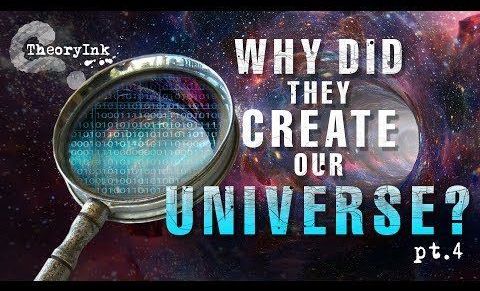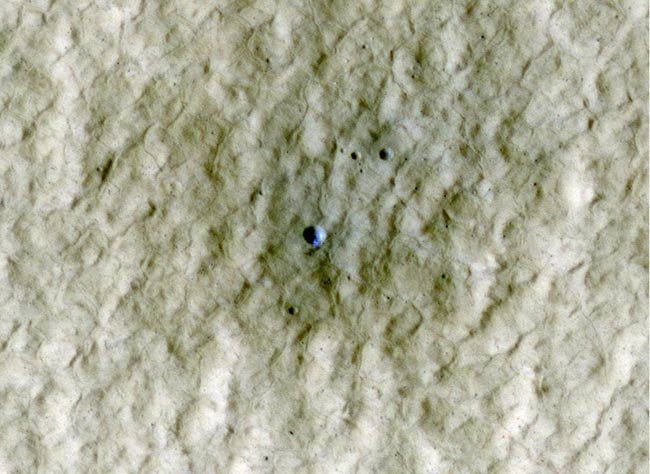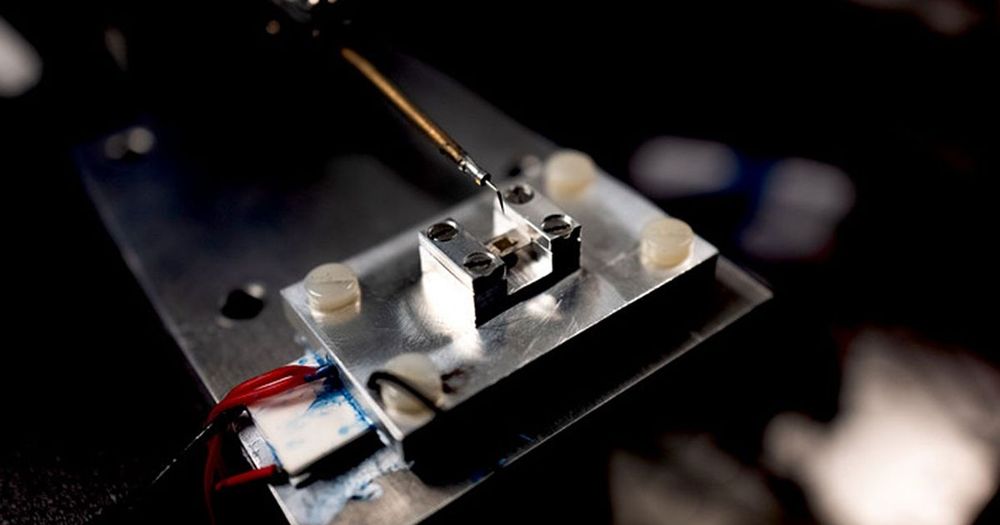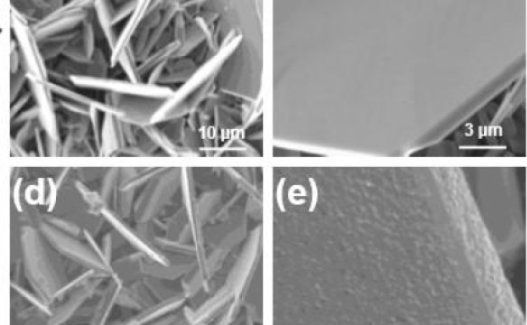Page 8937
Apr 17, 2019
If we’re in a simulated universe, could we make a search engine out of it?
Posted by Quinn Sena in category: futurism
Mars has water trapped in the polar ice caps. More water may lie just beneath the surface. A new study suggests that water also flows on the surface.
Apr 17, 2019
Polarizing the Data Center: Spin Lasers Deliver 240 Gigabits Per Second
Posted by Quinn Sena in categories: computing, internet
Next-generation, low-power optical data transmission may rely on polarization rather than switching laser pulses on and off.
Apr 17, 2019
Fast digital forensics sniff out accomplices
Posted by Quinn Sena in category: futurism
Software that rapidly analyses digital devices and builds a list of a suspect’s known associates could be a powerful tool for solving crimes.
Apr 17, 2019
Qualcomm Aims for Quantum AI Chips
Posted by Quinn Sena in categories: information science, quantum physics, robotics/AI
Qualcomm said it plans to begin testing its new Cloud AI 100 chip with partners such as Microsoft Corp later this year, with mass production likely to begin in 2020.
Qualcomm’s new chip is designed for what artificial intelligence researchers call “inference” – the process of using an AI algorithm that has been “trained” with massive amounts of data in order to, for example, translate audio into text-based requests.
Analysts believe chips for speeding up inference will be the largest part of the AI chip market.
Apr 16, 2019
Discovery! 3rd Planet Found in Two-Star ‘Tatooine’ Star System
Posted by James Christian Smith in category: space
Kepler-47 is a roughly 3.5-billion-year-old system located 3,340 light-years from Earth. One of its stars is quite sunlike, but the other is considerably smaller, harboring just one-third the mass of our sun. The two stars orbit their common center of mass once every 7.45 Earth days.
Back in 2012, Welsh and his colleagues, led by fellow SDSU astronomer Jerome Orosz, announced the discovery of two planets circling the two stars. These worlds, Kepler-47b and Kepler-47c, both have two suns in their skies, just like Luke Skywalker’s home planet of Tatooine in the “Star Wars” universe.
Apr 16, 2019
New discovery makes fast-charging, better performing lithium-ion batteries possible
Posted by James Christian Smith in categories: electronics, transportation
Creating a lithium-ion battery that can charge in a matter of minutes but still operate at a high capacity is possible, according to research from Rensselaer Polytechnic Institute just published in Nature Communications. This development has the potential to improve battery performance for consumer electronics, solar grid storage, and electric vehicles.
Apr 16, 2019
Scanning for cancer treatment
Posted by James Christian Smith in category: biotech/medical
Chemotherapy helps two out of three patients achieve remission. And recently, drug developers designed a new attack, one intended to target the patient’s malfunctioning genes, reclaim their hijacked cells, and halt growth. But this kind of drug development can result in more errors in trials, and can take years to get from lab to patient.
Now, in a paper published in Nature Chemical Biology, Harvard University Assistant Professor of Chemistry and Chemical Biology Brian Liau reveals why certain AML drugs only work some of the time. With his new technique, Liau and team expose more intimate details about the drug-body relationship and, in the process, disprove previous assumptions about how AML drugs work.
Apr 16, 2019
A doctor raised more than $250 million to create a new kind of clinic that charges a monthly fee, and it could be the future of medicine
Posted by Genevieve Klien in categories: biotech/medical, business, health
- In the future, going to the doctor’s office might start to feel different, with you or your insurer paying a monthly fee for routine access to your doctor without paying a copay.
- It’s the model for Iora Health, a startup that works with “sponsors” — mainly employers or private health plans for the elderly (known as Medicare Advantage) — that cover the monthly fee. Iora also built out care teams of nurses and other health professionals that can help the doctors within the practice.
- We spoke with Iora’s CEO Rushika Fernandopulle about how he built a company that’s raised more than $250 million with plans to grow to 50 practices around the US by the end of 2019.
- Fernandopulle is one of Business Insider’s 10 people transforming healthcare.
- Visit BusinessInsider.com for more stories.
Fifteen years ago, Rushika Fernandopulle had a radical idea.
A primary care doctor by training, he had been treating patients in the standard, insurance-backed way. But he started to realize that wasn’t working, and insurance wasn’t covering what he wanted to do for patients.


















